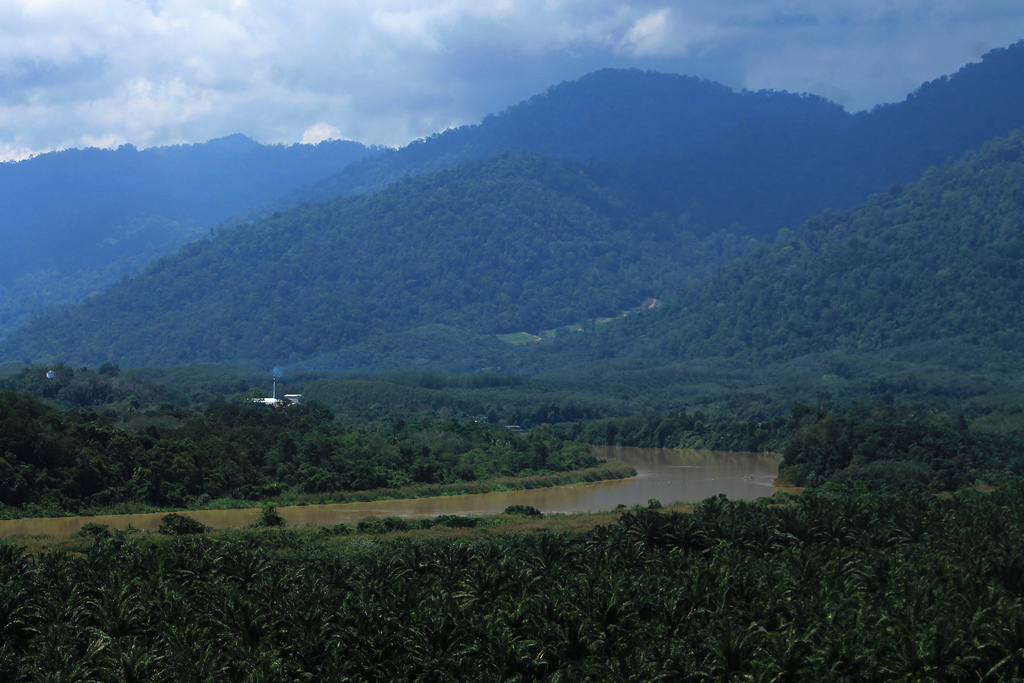Malaysia- one of the oldest states in Southeast Asia, the history of which includes dozens of changes of ruling dynasties, the colonial era, and years of ethnic inequality. Due to its convenient location on the shores of the Strait of Malacca, at the point where the most important sea routes from the west and east converge, this territory has always been a tasty morsel for states interested in international trade. At one time the country was occupied by the Portuguese, who were replaced by the British colonialists. The shortage of labor was compensated by immigrants from neighboring states, so a very motley ethnic composition has formed in modern Malaysia. However, not only the culture but also the nature of Malaysia is interesting in terms of diversity and history. Malaysia has five UNESCO World Heritage Sites.
Lenggong Valley
History says that this habitat of an ancient man was destroyed by a meteorite and the ensuing volcanic eruption, but it was volcanic dust that preserved evidence of the lives of those people for many centuries. Working tools, household items, and most importantly – the Perak man – a perfectly preserved skeleton of the Australo-Melanesoid, a kind of man who lived 10-11 thousand years ago! All exhibits are carefully collected in the archaeological museum, a bonus to visiting which (the archaeological museum) will be the opportunity to walk along the valley itself and climb to the observation deck, from which an impressive panoramic view of palm plantations and hills stretching beyond the horizon opens.
Gunung Mulu National Park
This park has gained fame and UNESCO protected status thanks to the grandiose Mulu cave system, ancient limestone formations, and extensive mountain rain forests. The territory of the park is huge and varied, so you can safely come here for a few days. Excursion programs vary in complexity: there are light trekking in the tropical forest and botanical garden, river rafting. For those who are not afraid of physical activity: climbing Mount Mulu – the highest point in the park (3277 m), camping in the jungle, and exploring the famous caves. And, of course, the main attraction is the Sarawak Grotto, the largest grotto in the world. It is so large that it can fit 40 Boeing 747s without touching each other with its wings.
Kinabalu National Park
Mount Kinabalu is the highest in all of Southeast Asia, its peak rises 4095 meters above sea level. The national park is located at the foot of the mountain, hundreds of thousands of tourists, rock climbers, and trekkers from all over the world come here every year to conquer the summit, the ascent and return descent from which takes 2 days and one night. In addition to trekking itself, the park is interesting for its unique nature, which includes four climatic zones, where almost all types of flora and fauna of the island of Borneo are represented. It is especially pleasant to get acquainted with nature and breathe in the fresh air during long walks and mountain biking. In addition, Kinabalu Park can be viewed from a bird’s eye view: updrafts allow you to fly near the mountain on a paraglider.
Malacca
The city of Malacca is located on the shores of the Strait of Malacca in the southern part of the peninsula. Until the 15th century, it was a tiny fishing village, but with the development of navigation, its strategic importance became obvious – it was here that all ships stopped to replenish food and water supplies, and also waited for a seasonal change in the direction of monsoons, winds that dictated the schedule of sailing ships to China and India. During the era of colonization, the city continually passed from one state to another: in 1511 Malacca was occupied by the Portuguese fleet, 130 years later it was replaced by the Dutch and, finally, in 1795, the rule passed into the hands of the British. More than three centuries of colonization have given Malacca a modern look, which is protected by UNESCO: a bizarre mixture of architecture from different eras and different cultures. One-storey building,
George Town
George Town is the historic center of the modern city of Penang in northwestern Malaysia. The city was founded in 1786 by merchants from the British East India Company and named after King George III. It is notable for the interweaving of European and East Asian styles in architecture. Today, most of the historic center is occupied by a clean and well-groomed Chinatown, in the center of which, among the house-museums of ancient Chinese clans, you can wonderfully find the intersection of two streets that forms Little India, as well as mosques, Buddhist and Christian temples. All denominations and cultures coexist peacefully in this small area, which is easy to walk up and down in one day. But, of course, it’s better not to rush, in Georgetown, there are many interesting places that you will not notice with a cursory glance.














